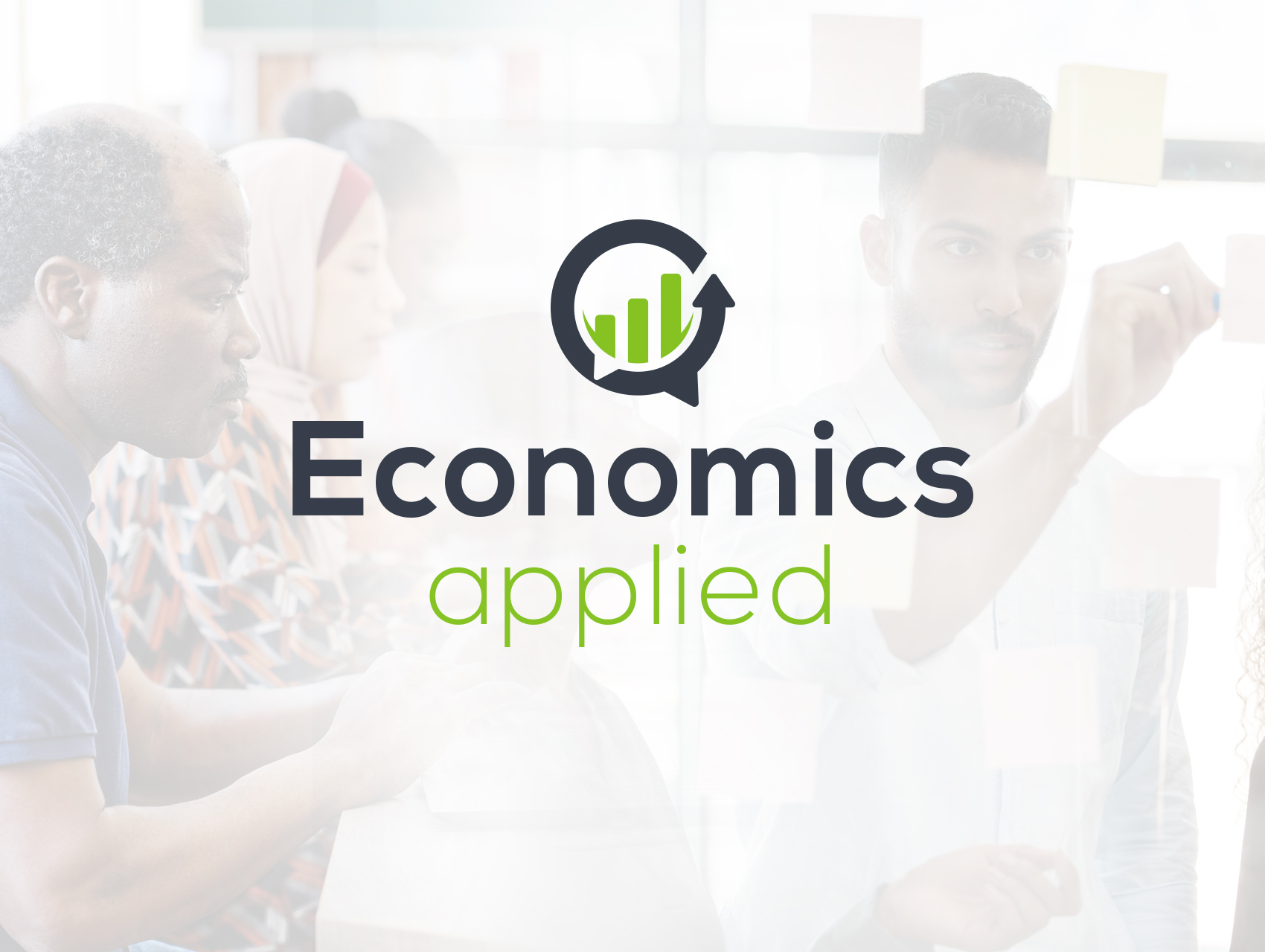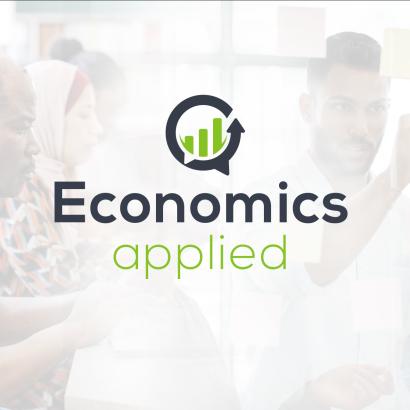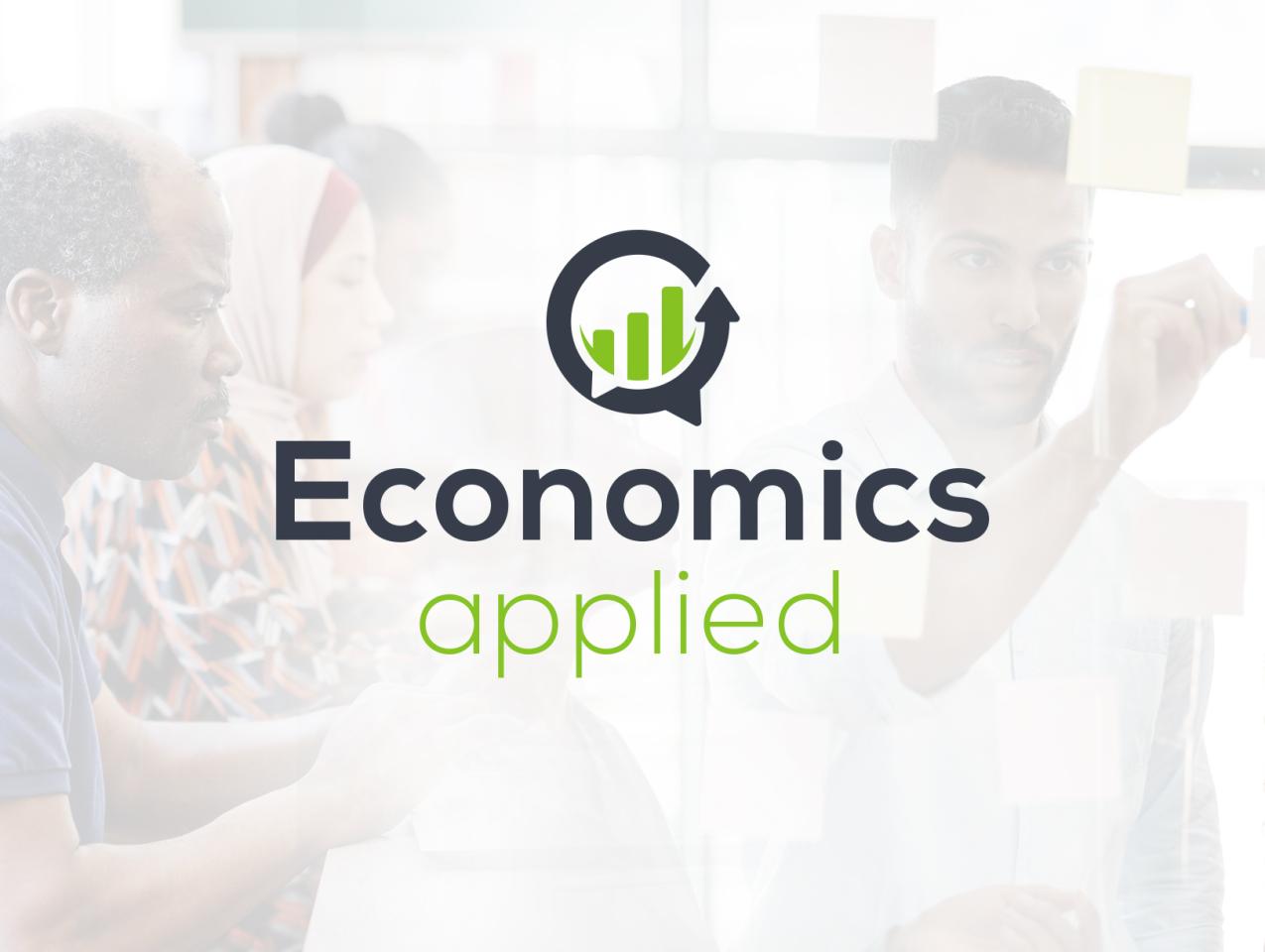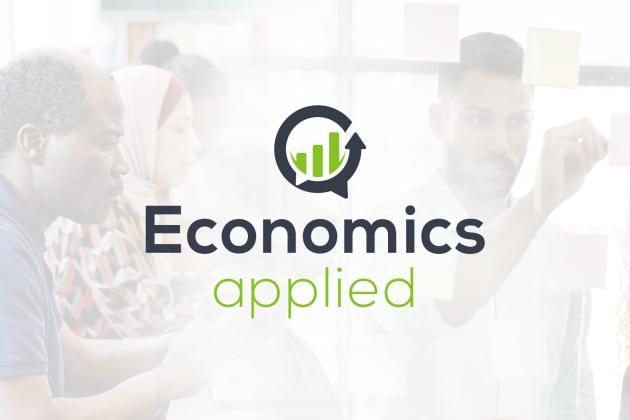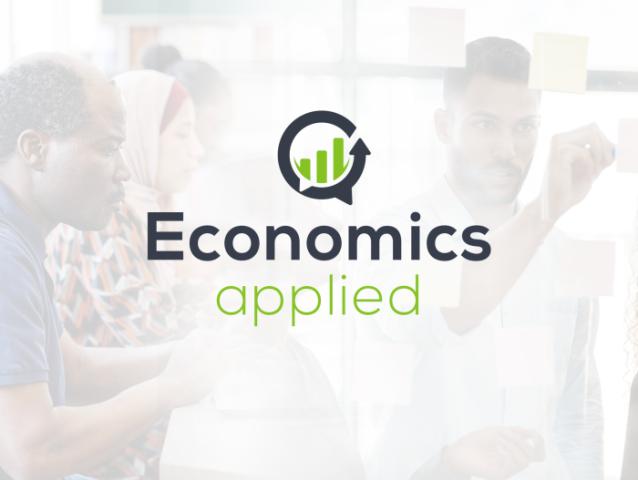- Economics
- Answering Challenges to Advanced Economies
Immigrants directly account for one-quarter of the economic value generated by U.S. patents. They account for more than one-third of that value after factoring in the collaboration benefits that immigrant inventors bring to native American inventors. Immigrant inventors also play a major role in the two-way flow of scientific and technical knowledge between the United States and other countries. Choking off the flow of immigrant inventors would hamstring the American innovation enterprise and slow the development and diffusion of scientific knowledge.
Steven Davis: American immigrants account for 16% of all inventors of US patents in the period from 1990 to 2016. And they account, those patents, the ones that are invented by immigrants, account for 25% of the stock market value generated by us patents during this period. That's according to a recent study co-authored by Rebecca Diamond, our guest on today's episode of Economics Applied.
Welcome. My name is Steven Davis, senior fellow at the Hoover Institution and host of the show. Rebecca Diamond is the Class of 1988 Professor of Economics at the Stanford Graduate School of Business. She is also a founder and director of the Cities and Urban Lab. I'm not sure I got it quite right there, Rebecca, but you can tell me the full name.
Anyway, welcome to the show, Rebecca.
Rebecca Diamond: Thanks so much for having me. It's great to be here.
Steven Davis: So in this study, it's a really fascinating study, and it speaks to a huge, I think, economic question, but also one that has a lot of political sales in the current day.
So a big part of what you do in this paper is just develop and implement a method that lets you figure out, basically, who among people who are named inventors on US patents, who among those named inventors are immigrants. And you do that, as I understand it, on the basis of partial Social Security numbers.
And nerds know this fact. You can figure out when somebody got their Social Security number and approximately where, which state, at least, they got their Social Security number by the first five digits of the Social Security number. Because they're handed out according to a system. So you have those first five digits for the names of people who appear on as inventors of US patents.
There may be one, two, three, or four or so. And that's the way you determine which of those inventors are, I left out one thing, I guess. At least in recent decades Americans tended to get a Social Security number in recent years close to when they were born.
Or before that, typically when they first started working, ages 16 or 18, whenever they've had their first job. Immigrants, however, tend to get their Social Security numbers after they arrive. And immigrant inventors typically arrive in their 20s or 30s or maybe even later. So that, correct me if I'm wrong, but based on when somebody got their Social Security number, how old they were, you can, with a fair bit of accuracy, determine whether or not they're an immigrant.
Have I got that basically right?
Rebecca Diamond: That's exactly right. I would say the only type of where we're gonna infer someone is an immigrant based on the age in which their Social Security number was issued to them. So by definition, we will miss children immigrants. So if you immigrate with your parents at age five, you would be considered a US-born person child immigrants, this is all about adult immigration.
Steven Davis: Right, so just adult immigration. Yeah, that's a good clarification. So in some sense, the numbers I stated at the outset understate things a bit.
Rebecca Diamond: Exactly.
Steven Davis: So why don't you tell us the basic facts that come out of this? Because there's this big measurement piece, which the paper spends a lot of time kind of confirming that this is a reasonably accurate way to determine who's an adult immigrant and who's not.
But then once you've done all that hard work, there's some basic facts that fall out rather in a straightforward way from the analysis I cited, two of them. But why don't you give what you think are the full list of these basic facts?
Rebecca Diamond: So I guess part of, just to back up a little bit, one motivation to create these basic facts was there's an increasing amount of anecdotal evidence that immigrants play an outsized role in innovation in the US.
If you look at Nobel laureates, for example, the US-based ones are very likely to be immigrants. But we didn't really have this systematic, full, nationwide, representative data set of among innovators, and in this case, among patent inventors, what share are immigrants. And this data constraint was basically due to the fact that the patent database, which is public record, has never been able to be commingled at the individual level with another dataset which identifies immigrant status.
Which, basically, the only place you could get that is sort of a hard, direct variable would be something like internal immigration records. Which they never give out at the individual level, or maybe something like the US Census records. But that would still be lots of confidentiality screens to do all the thinking.
So our sort of angle to get at that without having to convince the US government to open up its confidential records was to use the fact that this first five digits of SSN actually encodes a lot about when you got your SSN, where you got it. And because we were able to link a data set that had those first five digits of SSN.
So basically the whole US population, inventors were not just everybody, right? With the patent dataset, which has names of inventors, that's how we were able to create this representative data set. And that allows us, as you said before, to say that in this set of linked immigrants to the inventor data set, we can first just say, in our overall population of the US, what share of people do we identify as adult immigrants?
And that comes in at around 10%, 11%. So that's gonna miss things like undocumented immigration, because you wouldn't have an SSN, it's gonna miss child immigrants. So it's going to be lower than what you would expect to be the overall immigrant share if you were to include all of these things.
So once we have this sort of identified adult, legal adult immigrants, that's about 10%, 11% of the US. But then once you even start selecting on these sort of traits of being very high achieving in the sort of innovation space, just the flag of being an inventor is already over-representing immigrants.
So 10%, 11% percent of the population are immigrants, but inventors, 16% are immigrants. So conditioning on inventor is already over-representing immigrants. And then once you condition on sort of just what share of patents are written by immigrants, there you get up to 24%. You're much more likely to be an inventor.
And even conditional on being an inventor, the immigrant inventors are more productive in terms of number of patents created. And then once you even condition on, let's use market value with a stock market value, which is sort of says that not all patents are created equal. Some patents are much more influential than other patents.
And once you can account for the increasingly sort of stringency of how high impact the innovation is, immigrants get increasingly higher sort of representation share where market value is sort of our best overall value.
Steven Davis: Yeah, let me summarize that in somewhat different terms. So among legal adult immigrants, we just picked one randomly.
They're more likely to be an inventor. And native, adult Americans. That's one point. Second, and inventors here means you were named on a US patent. That's what inventors means here.
Rebecca Diamond: Yes.
Steven Davis: Second, among all inventors, the immigrant inventors, these ones, these legal adult immigrant inventors are more productive in the sense that they generate more patents than the average native immigrant.
Rebecca Diamond: Average native inventor, yes.
Steven Davis: Average native inventor, thank you. And third, they even more so, a little bit more so the immigrant inventors generate patents that have high economic value as measured by their contribution to their employers' stock market price. Is that right?
Rebecca Diamond: That's right, yeah.
Steven Davis: So these adult immigrants are not only disproportionately likely to be inventors, as we've defined it, but they're also even more concentrated among the most successful inventors.
Rebecca Diamond: That's exactly right, yeah.
Steven Davis: Okay, so I think obviously that's kind of a basic fact, but it's pretty important to understand if you are concerned about the pace of US innovation, which is something I think most people are concerned about.
Because the pace of innovation feeds into overall productivity growth, improvements in living standards over time. This is just one important slice of innovation. It's not all of innovation, but it's a very important part of innovation. And we can see from your numbers that immigration plays a huge role in that overall enterprise within the United States.
Rebecca Diamond: That's exactly right.
Steven Davis: Okay.
Rebecca Diamond: We then get into, can I just follow up a little bit on that? Try to understand what are some facts about these immigrants that kind of make them different? Like, are they just doing everything the same as US foreign inventors and just churning out more patents?
We see if we actually look at some metrics of what their production of patents looks like over their life cycle, as they age. And as they're in the US for longer, we can find what looks like they're sort of more attached to global innovation networks, meaning that they're much more likely to cite other patents that were issued abroad.
So foreign patents, so it seems like they're more knowledgeable of what's going on outside of the US. And also, on the flip side, the patents that they author in the US are more likely to be cited by foreign patents. So it seems like there's sort of some foreign knowledge importing and exporting that the immigrant inventor seems particularly good at.
And that might be one of the reasons they're sort of higher impact.
Steven Davis: Okay, so that might be why they're higher impact. But it also speaks to another important consequence of immigration into the United States by these inventors and potential inventors, which is they seem to facilitate the two way flow of scientific technical knowledge.
And so there are benefits globally from the fact that the United States attracts large numbers of skilled immigrants. And that, I think, is often lost in discussions of brain drain. It's like one country's loss of highly skilled scientists is another country's gain. But that's not the whole story, as your evidence suggests, because that process of immigrants, of scientists moving across countries, also facilitates the flow of information globally, which makes-
Rebecca Diamond: Yeah, two-way knowledge diffusion.
Steven Davis: Two way knowledge diffusion.
Rebecca Diamond: More information in the US, and the information produced in the US gets disseminated abroad more.
Steven Davis: So, in that sense, even if there is some direct loss of talent from the countries that export their highly skilled scientists, they're probably much more productive in the United States than they would be in most other countries.
Not all other countries. But also it facilitates this two-way flow of information that's good for everybody.
Rebecca Diamond: Right.
Steven Davis: Okay, so those are just some basic facts. And then you get into an analysis in which you say, okay, but wait. I think it starts from the observation that scientists have and researchers have effects on their collaborators, their co-authors, their co-inventors.
So that's why people like you and me like to be at Stanford. We have lots of good colleagues, and we think we benefit from our exchanges with those colleagues and so on. So we think this idea of exchanging information among collaborators, colleagues, co-inventors, is really important, and you try to quantify that effect in this particular space and do it separately for immigrant inventors and native inventors.
So explain to us how you went about that. That seems like a challenging undertaking empirically, but you have a nice way to do that. Explain to us how you did that.
Rebecca Diamond: Right, so I guess the motivation here is to acknowledge that the amount of innovation produced by immigrants or by any one inventor, you might think we just wanna attribute patents that they author is sort of a metric of their contribution.
So if I author ten patents, I produce ten patents worth of innovation for the US. But that might miss the fact that, say, you and I wrote a patent together, and our collaboration together actually meant I learned something from you and you learned something from me. And that knowledge exchange both led to you patenting in the future, not with me, but because of our interaction, you learned something and had an idea that led to more patents authored by you.
And maybe I had more patents offered by me from what I learned from you. So the standard attribution just by written author name would miss any of that type of contribution.
Steven Davis: The numbers that we talked about earlier are the standard author attribution approach.
Rebecca Diamond: Exactly.
Steven Davis: And now you're gonna say, well, look, that's probably not capturing the full picture.
Rebecca Diamond: Exactly, so what we're gonna focus on is one specific type of externality. So how the external effects on innovation beyond my own patent authoring is through these, what we call collaboration externalities. So we're gonna look at people who write patents together, and we wanna try to quantify how much of that previous collaboration affects each inventor's subsequent patenting productivity, regardless of whether we're actually working together in the future or not on the actual patent.
So the reason that that is sort of statistically hard to quantify is it's hard to disentangle in the data how much of your future patenting is due to the fact that you and I wrote a patent together and I taught you something. Versus maybe you just had a bunch of good ideas after working with me, and you also had good ideas when you worked with me, and it has nothing to do with me.
And it was just, you're just going to be a productive inventor over your whole life. So the way we disentangle how much we can attribute to the collaboration itself versus just whatever else is affecting your productivity is to use the fact that some inventors unfortunately pass away slightly young.
So we look at below age 60 deaths, and then we follow the patenting outcomes of their prior collaborators. So we know that the people who have collaborated with this dying inventor before that inventor passes away, we know who those people are. And then we think of that death as sort of an exogenous, random removal of part of your collaboration network.
So you lose access to this person that you may potentially would have continued to learn from or talk to. And then we follow the patenting outcomes of those surviving collaborators, the co authors of the dying inventor, and compare them to basically similar inventors who didn't have their collaborator pass away.
So the death we're thinking of is sort of as good as random from the perspective of the life cycle productivity of the collaborators. And we can show that indeed, A, just regardless of whether you're an immigrant or a US foreign inventor, if you have a collaborator that suddenly passes away, your subsequent productivity on patenting declines.
Maybe that's not that surprising, other workers documented that as well. What we focus is on is the difference in that decline based on whether the dying inventor is an immigrant or a US-born inventor. And we find that when the immigrant is the person who's passing away, their surviving collaborators suffer a much greater productivity loss than the US born dying inventors.
Suggesting that the external effects through these collaboration externalities are particularly large for the immigrant inventors. So not only are they producing more patents themselves, they're positively impacting the productivity of their collaborators over and beyond their own patents in a disproportionate way.
Steven Davis: And they're doing so more than native inventors, on average.
Rebecca Diamond: Yes, almost double, yes.
Steven Davis: Almost double, but why is that, according to your analysis? Why are these collaboration externality spillovers, as you call them, bigger? And we're talking about, on average, for immigrant inventors as compared to native inventors.
Rebecca Diamond: So we actually looked at ten different channels to try to explain what is different about these immigrant dying inventors and their collaborators, other than them just being immigrants, to try to explain this effect.
Shockingly, these ten effects, I'll talk about them in a second, almost explain none of it. So there's something unique and special about immigrants, over and beyond the ten theories we could test, that make them particularly sort of creating these positive externalities. So we thought, well, one of our first ideas was, immigrants are particularly productive.
So maybe if you just collaborate with someone who's particularly productive, that's gonna lead to larger collaboration externalities. If you work with someone smart, they teach you stuff, and we do find that to be true. We do find the collaboration externalities are bigger when the dying inventor has produced more patents in the past and is particularly productive.
So you would think that would explain some of the reason that immigrants are more productive, but then there's a countervailing force. Which is that immigrant inventors, and also productive inventors, tend to have very productive and innovative collaborators, they tend to work with other smart people. And if the collaborator themselves is particularly smart and productive, they're more immune to the death.
So the death doesn't affect their subsequent productivity as much. So those two effects kinda cancel each other out. So the immigrant inventors are particularly productive, which makes them diffuse more knowledge, but they also tend to be working with particularly innovative and productive co authors. And those people tend to be less affected by an inventor deaf, because they themselves are so productive.
And when you sort of put those two effects together, they sort of net each other out. But despite those two effects, the immigrants are still leading to larger collaboration externalities. So we sort of went through the kitchen sink of mechanisms, and they're all there, but they tend to not, on aggregate, make the effect of immigrants
Steven Davis: I thought you had another, I mean, tell me if I misread that, I thought that was another fairly sizable effect, which is the size of the collaboration network was larger, on average, for immigrants.
Rebecca Diamond: That's true.
Steven Davis: And so when an immigrant inventor passed away earlier, he tended to affect a larger, number of collaborators in their terms of their future productivity. And that was actually a material effect, or did I get it wrong?
Rebecca Diamond: So, I guess it depends on how you think about the perspective.
So one immigrant inventor dying will affect more collaborators, and if you sum up all of their productivity, that will have a larger effect. Most of the effects we're focusing on was more from the perspective of the surviving collaborator. So even for a single surviving collaborator, they are much more affected by the death.
And then if you were to sum across the fact that there are just more collaborators connected to a dying immigrant inventor, that effect is sort of even further amplified cuz you're hurting more people with that.
Steven Davis: Right, right. Okay, so I have a somewhat different interpretation than the one you've emphasized, and I wanna see if you agree with this or you think this is somehow off the mark.
The three effects we've talked about, both the kind of the direct spillover effect, the fact that immigrants tend to work with more productive collaborators, and immigrants tend to have larger collaboration networks. All of those, in some sense, are flowing from, as I understand it, that, on average, immigrant inventors are more productive.
So more productive people tend to work with other highly productive people, they tend to have larger collaboration networks. And as you explained, it's highly plausible, and the data bear this out, they have more positive spillover effects. But that would be true for highly productive native inventors as well, I suspect.
And this is one thing I didn't see in the paper, maybe I missed it. Is there, once you condition on productivity, is there really a difference? So if I were to take a set of American inventors who were as productive as immigrant inventors, and you did all the same kinda comparisons you just described, would it look the same?
Or would it look different in some systematic-
Rebecca Diamond: That's what I was sort of alluding to, is that basically, you can take these ten dimensions of characteristics about productivity and collaboration networks and what your knowledge area is. And match them to identical, more or less, native inventors and say, all right, once you actually find people that look similar on these dimensions, how different is the collaboration externality effect?
And we find it's just as big. So you explain none of the effect by finding Americans that look the same on these observable characteristics. High productivity, high collaboration networks, sort of unique knowledge backgrounds. And you sort of put all that together and you still get immigrants are disproportionately having large externalities.
Steven Davis: Again, so I'm gonna get into the weeds a little bit here, but help me. If I understand, is it right that that exercise rests on a linear specification?
Rebecca Diamond: Nope.
Steven Davis: It doesn't, okay.
Rebecca Diamond: So literally what we do is we take each immigrant inventor who dies, and we look at ten dimensions of characteristics, and then we bin each one of those ten dimensions into ten bins.
So it's like a discrete category that you're in in each one of those bins, and then we have to find a native inventor that's identical on those ten dimensions, and then we pair you together. And there's some weighting we do if we have multiple matches, but if it's 1 to 1, and then once you have those pairs, you basically have created a sample of native inventors.
That are identical on those observables to the immigrants, and then you run the estimation in that new sample of native inventors and see what the magnitude of the dying inventor effect is. Compare it to the natives, and you explain it's basically the same as not doing that matching exercise.
Steven Davis: Okay, I'll think more about that, and maybe we talk offline, there's something there I don't fully understand in the claim that there's no functional form underlying that result, but I'm gonna leave that aside.
Rebecca Diamond: It's paramount within a bin, so it's nonparametric, if you make the bins go to infinity, then it's fully nonparametric, but it's-,
Steven Davis: Sure, okay, so, all right, well, then what do you think's going on here? I mean, there are some important effects, as we just talked about earlier, but the two biggest ones, basically, as you described it, net each other out, they cancel each other out. The two biggest effects that are associated with the high productivity of immigrants relative to native inventors, they tend to cancel each other out.
And then the rest of the stuff is mostly not that important, the stuff you can measure, so what do you think is going on?
Rebecca Diamond: So, one thing that we can't measure well, so I can't test this theory, which is related to this diffusion of knowledge, is that their knowledge background.
If you grow up, say, in Germany, there's certain fields that Germany is really good at, and you're gonna be a particular expert in that. Over and beyond my ability to sort of say, all right, these are the crude categories that Germany's good at, so we wanna compare them to Americans that are kind of good at those same categories.
But if there's something sort of unique to German engineering innovation or something, I can't really get that. Or if there's something unique to Indian, I don't know, computer science or something, it could be, given this sort of diffusion of knowledge we're seeing, which looks unique to being an immigrant.
My guess, it has something about sort of that country level expertise of these specific skills that's potentially just taught differently and just a different perspective than whatever's going on in the US. And that could be, when you work with someone, you learn this sort of unique perspective, and that's why the external particularly big.
Steven Davis: So, it could be learning a different perspective, or I guess, couldn't there be another explanation that they're just complementary skill sets?
Rebecca Diamond: Sure.
Steven Davis: Not necessarily your, I mean, the learning story you told is one version of complementarity, but there could be others, one guy knows how to use a wrench, a guy knows how to use a hammer.
Rebecca Diamond: But remember, it's on the subsequent patents where you're seeing the effect, so it has to be a learning effect.
Steven Davis: It has to be something that carries forward.
Rebecca Diamond: That carries forward, if I'm just good at using the wrench, I'm not an author.
Steven Davis: Yeah, then that's a good point, okay, so I see, so then, if that's the story, is there some way to identify a native-born.
American inventors who look more like foreign born inventors on these other dimensions? So, you mentioned maybe German mechanical engineers or something, or Indian computer scientists. There must be, among native inventors, some who kind of look unusual relative to other natives, but similar to German mechanical engineers and likewise, or the Indian, is there some way to get at that in the day?
Rebecca Diamond: One thing we don't do in this paper is we don't actually know your country of origin. So, if it's sort of unique skills that vary by country of origin, we're not able to identify, we don't know which country you came from, we just know that you weren't from the US.
Steven Davis: But you do know the skill set probably defined based on their history of patent.
Rebecca Diamond: Crude way, right? We know the knowledge category of your patent, we don't really know the minutiae of what your sub subfield is.
Steven Davis: You could, in principle, find domestic native inventors who have a patent history profile that looks like a German mechanical engineer.
And then see whether that type of native death is associated with higher spillover effects than the typical native inventor early death. So, there's a lot of work to do that maybe there's not enough power in the data.
Rebecca Diamond: So, once you start matching on too many things, you start to run out of matches, right?
If you're gonna match on ten dimensions, so you want to go to 20 dimensions, you start to it harder to find matches, we do stuff along those lines. So we try to look at sort of the type of area that you're patenting in, and how different is that from the area that your collaborators are?
Like, are you really far from your collaborators or really close? We also match on, just this like knowledge, whatever the category of the knowledge that you're generating. So, we basically tried to push all of these stories as far as we could in the data, and you basically find evidence for each individual story that you would expect.
But because there are these offsetting forces, when you put them all together, you can actually make the immigrant effect much smaller, and what we can't do is like this German example, right? We don't know what is the profile of a German mechanical engineer, we don't know who's German in our data, so we don't have a way of, in that profile, we'd have to get external data.
Steven Davis: Understood, but nonetheless, you've shown, I think, fairly persuasively in your data, that even though we don't fully understand why. There's pretty persuasive evidence that immigrant inventors have larger spillover effects on their collaborators going forward on average, than does native inventors. So, let's take that, that observation suggests, and this is where your paper goes next, that the initial attribution that we talked about, 16% of inventors, 23% of inventions.
And 25% of economic value is measured by stock market responses, is probably an understatement or is an understatement of the overall contribution of immigrants to the American patent generation value creation enterprise. So, the last part of your paper is, well, can we quantify that? It's kind of directionally, the effect is clear, but you try to quantify and say, well, what's the overall effect in some accounting sense, after we capture these indirect spillover effects.
So tell us what you did there and what you found.
Rebecca Diamond: That's right, so we have, again, it's an accounting exercise, we don't want to, if you were to say how different would innovation in the US be if we didn't have any immigrants? We can't answer that question because there's so many things in the world that would be different if that were to happen.
It's more attribution, so our first attribution, you just get credit, if you're an author on the patent now, you're gonna get credit. Basically, if you've co-authored in the past with someone, some share of their subsequent output is gonna get attributed to you. And we can do that attribution based on what we found from this early deaths of immigrants and native inventors.
So, as you said before, I think our benchmark here, with just using the authorship as the attribution, we're using our metric of citations right now for this calculation. So, we say 23% of all innovation as measured by citations of patents goes to immigrants, but once you account for the fact that- There are these cross spillovers.
So the immigrants affect native-born, and native-born both affect immigrants. So it's going both directions. Both are going to get credit for their spillovers. But because the immigrant spillover effect is bigger, we find that immigrants account for 36% of all innovation. And going from that 23% to the 36% is, because of this, their external effects on us born workers.
Steven Davis: Okay, so that's interesting, this calculation that you just sketched. It's a reasonable one, I'll put down the table first. But there's some strong assumptions that underlie it, and as I see it, there's at least two. You specify a particular production function, and then you do your calculations based on a local approximation around a particular point.
But the accounting exercises you're doing is not local. So if we got the functional form wrong, we could get the quantification wrong. But the bigger issue, though, is that the production function. So you've written down a production function, economists will know what I mean by a Cobb-Douglas Production Function.
That aside, your production function basically has two inputs, immigrant inventors and native inventors. And even for an accounting exercise, it's critical that you've got the basic inputs to the production function right. And here there's some reason, I think, to question that, and I'll go back to something that, it's in the paper.
We didn't talk about it much previously, but one of the interesting facts that you document in the paper is that the average gap between immigrant-inventor productivity and native-inventor productivity really starts to spread out as people get further along in their career profile, 40s, 50s and so on. And there's a gap before them, but it's much smaller, if I basically got that right.
And so that kind of raises the question, well, why is it that the measured innovation of the natives is declining relative to the immigrants as you move into the 40s and 50s and so on, kind of peak productivity years for many inventors? And one conjecture, a plausible one, I don't know whether it's right, is that the natives are disproportionately moving into senior management roles.
That takes them out of the direct production of patents. So they're not named patent inventors, and yet they are still a critical part of the overall innovation enterprise. The reason I think that's plausible is because these senior management roles are more likely to involve dealing with many different stakeholders and participants in the innovation ecosystem, beyond the inventors themselves, the funders, the shareholders, and so on.
That probably requires more cultural fluency. Let's call it that. It's not just about linguistic fluency. It's about cultural fluency, ability to deal with a variety of different people and groups. Those skills are probably more preponderant in natives than immigrants, other things equal. But if you think they're still a really important part of the innovation enterprise because they're making funding allocation decisions, they're deciding which innovation teams get well funded, and they're probably having some influence on what the innovation team's doing.
They're the ones who are selling it to the financiers and so on. So all of that suggests the story I'm sketching, a plausible story, not one that I've confirmed, but it's a plausible one, that you're missing a piece of the overall input into the innovation enterprise. And that piece that's missing is mostly these natives going off and doing these senior management roles.
It gets uncounted, they get pulled out of what you're counting and into what you're not counting. And if that story's right, I can't think my way all the way through this on the fly, but it seems like you may be understating or overstating the overall contribution of immigrant inventors and understating that of natives.
And I wanted to get your reaction to that thought.
Rebecca Diamond: Okay, yes, so we thought about this. It's not in the paper just because there's only so many things you can put in. So I guess three points. We were worried about this exact issue. Now we can't, in our data, in the inventor data, look at did these guys become managers?
Cuz that's just by definition, not in the inventor data. But what you can do is you can go to US census data, like the American Community Survey, and you can look at sort of a cohort of US foreign workers and immigrants. Say, you can look at them like you look at, say, 25 year olds in 1990, and then in the 2000 census, they're the 35 year olds, and then in the 2005 ACS, they're 40 year olds.
You can kind of follow this cohort, and you can look at the metropolitan area level at the share of that cohort. You can either do it by industry or unconditional. And we're gonna look just at people with at least a college degree cuz we think those are the potential inventors.
The share of that cohort that is in an occupation that we flag is like high invention, likely, and then also like a management. So we can kind of look at over their lifecycle, even though you can't follow an individual worker, you can follow the cohort. What is the transition into management?
And then we can basically put that as a control in our regressions, because we know the county that you live in, in our data. Is it true that in the counties where you see native borns who started off in these technical occupations and are now more likely to be in management positions, are those the counties where you also see this widening?
And we can explain maybe 5% of the effect.
Steven Davis: Okay.
Rebecca Diamond: So it's not perfect because we can't link it at the individual level, but we can link through geography. Now, there are issues about imperfections, there can be return migration that we can't really deal with. If you move back to your country, then the cohorts are not fully balanced.
But it did not seem like it, you would expect, if that was a huge driver of what's going on, for that to pick up more than 5% of the gap. The other piece of evidence, which is more simple and raw that looks at this, is if moving into management is mostly affecting the extensive margin, meaning whether or not you're listed as an author, but conditional on authoring, you should still be showing your true cards.
Then we can look at among the set of patents issued by natives versus immigrants over the life cycle, do we see this intensive margin gap opening up like more citations, and we still see a very similar effect on the intensive margin. If anything, it's a little bigger. So I think your story is part of what's going on, but I don't think it's the preponderance going on.
Steven Davis: Of the mainstream. Okay, that's helpful. Do we have, aside from what appears in the ten k filings, where you get the very senior executives of publicly traded companies, do we have just any data sources on who is holding senior management positions in publicly listed firms? In the high end, there's a few high innovation industry sectors.
Rebecca Diamond: I can't remember. We looked. So also in the patent data, we know the name of the company that owns the patent. So I think we tried to look at. This was like ages ago. It didn't make it into the paper where we tried to look at which companies we thought this issue might be more likely to be going on.
Honestly, I don't, nothing jumped off the page. I can't remember. You could do another big data undertaking and say, link to the LinkedIn data where you have people's career histories.
Steven Davis: Okay, so that's another paper, but an interest. It seems like a worthwhile one to pursue for this reason and for many others, just better understanding the life cycle career profile of scientists, engineers, and so on.
Okay, this is really interesting. So bottom line is immigrants, let's be careful here. It's summarizing at the end. Legal adult immigrants to the United States account for a disproportionate share of all inventors as defined by people whose names appear on us patents. That's 16% versus 10% of the adult population, and it's more like 23% of the patents on a citation weighted basis, 25% of the economic value as you measured by contribution to stock market value.
And once you make your best effort to factor in these spillover effects, these collaboration externalities, it's more than one third of all US patent value creation is accounted for by people who immigrated to the United States as adults. Is that basically the, did I get it right?
Rebecca Diamond: Yes.
Steven Davis: That's big. I mean, you were careful to say, look, this accounting exercise is not the equilibrium response to what would happen if we were to shut down the immigration of skilled scientists and engineers to the United States. Although I think one, it's nonetheless to a first order kind of suggestive, strongly suggestive.
I'd say that it would be something of an economic disaster, at least for the innovation side of what happens in the United States to do that. So if that's your view, this is certainly supportive of that. I think if anyone does want to shut down immigration or even curtail it, we're talking about high skill immigration here, in a significant way, you should wrestle with well, there are going to be large scale economic consequences, negative ones for the United States.
Is that a fair assessment?
Rebecca Diamond: I think that's very fair. We can't say the exact number of what would be the exact amount of innovation loss. It's hard to think that it's anything other than large. We're finding a very large number and you could layer on lots of complicated stories on top of that.
I think it's hard to make it anything other than large.
Steven Davis: Well, thanks, Rebecca. I think this is really important work and I hope it'll get a lot of attention and it's important for what it says. But also as we discussed, there's some avenues for more research here that are quite interesting to pursue and I hope you and your co authors and others will do so great.
Rebecca Diamond: Thanks so much, I really appreciate taking time.
Steven Davis: All right, thanks, Rebecca, it's been fun. Take care.
ABOUT THE SPEAKERS:
Rebecca Diamond is The Class of 1988 Professor of Economics at Stanford Graduate School of Business where she teaches Data and Decisions. Her current research studies the causes and consequence of diverging economic growth across U.S. cities and its effects on inequality. She is an applied micro economist and founder and director of the Cities, Housing, and Society Lab. Rebecca was a postdoctoral fellow at the Stanford Institute for Economic Policy Research from 2013 to 2014. She received her PhD in economics from Harvard University in 2013 and her BS in physics and economics and mathematics from Yale University in 2007.
Steven Davis is the Thomas W. and Susan B. Ford Senior Fellow and Director of Research at the Hoover Institution, and Senior Fellow at the Stanford Institute for Economic Policy Research (SIEPR). He is ann economic adviser to the U.S. Congressional Budget Office, elected fellow of the Society of Labor Economists, and consultant to the Federal Reserve Bank of Atlanta. He co-founded the Economic Policy Uncertainty project, the U.S. Survey of Working Arrangements and Attitudes, the Global Survey of Working Arrangements, the Survey of Business Uncertainty, and the Stock Market Jumps project. He co-organizes the Asian Monetary Policy Forum, held annually in Singapore. Before joining Hoover, Davis was on the faculty at the University of Chicago Booth School of Business., serving as both distinguished service professor and deputy dean of the faculty.
RELATED RESOURCES:







